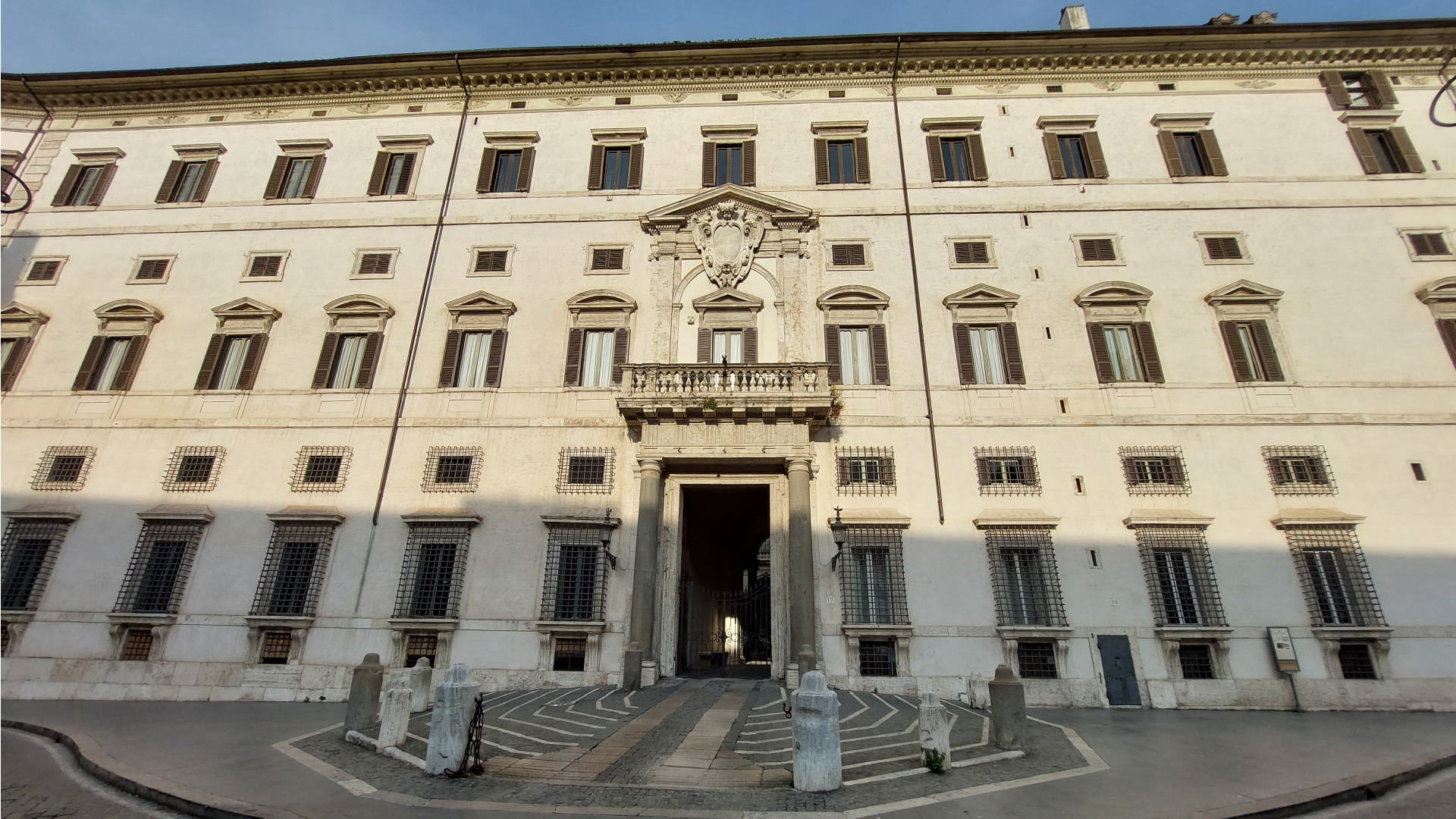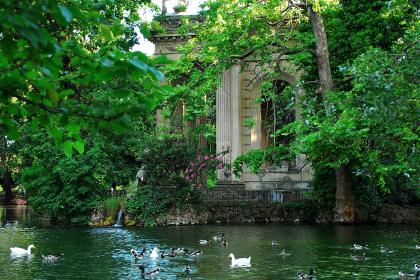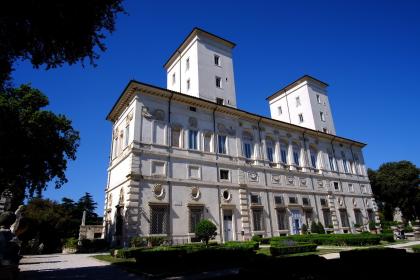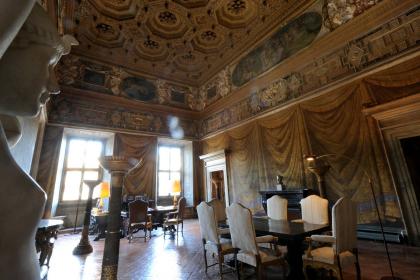
Its principal façade is on Largo della Fontanella di Borghese, but the building occupies a large and irregular block between Via di Ripetta, Via dell’Arancio, Via di Monte d’Oro, Via della Fontanella di Borghese, Via Borghese and Piazza Borghese. The palace’s imposing size, with an extensive enfilades of sumptuously decorated rooms, aptly communicates the immense fortune and the high social rank of the the Borghese family, originally from Siena and protagonist of an overwhelming rise in Roman society. Cardinals, popes, politicians, generals, the members of the family were also patrons of the arts: many of the works that we admire today in the Borghese Gallery come from the palace.
Nicknamed “Cembalo”, “the harpsichord” for its unusual plan reminiscent of the ancient musical instrument, the palace has long been considered one of the wonders of Rome, together with Palazzo Farnese, the “Scala di Caetani” (the staircase of honor in today’s Palazzo Ruspoli) and the “Portone di Carboniani” (Palazzo Sciarra’s portal). Its history begins in 1560 when Monsignor Tommaso del Giglio commissioned Jacopo Barozzi known as Vignola to build a small palace, which was then completed and enlarged by Martino Longhi the Elder on behalf of the Spanish cardinal Pedro Deza, to whom it had in the meantime been sold. In 1596 the palace was purchased by Cardinal Camillo Borghese, who was soon elected pope with the name of Paul V: new works to enlarge the building thus began, at first under the direction of Flaminio Ponzio and then of Carlo Maderno, Giovanni Vasanzio and, after 1670, Carlo Rainaldi.
A majestic portal between two columns on which rests a large balcony adorns the main façade on Largo della Fontanella di Borghese, the oldest part of the complex. The portal leads into a grandiose and monumental courtyard, decorated with ancient statues and surrounded by a portico with a double order of columns (96 Doric and Ionic columns); at the bottom, the extraordinary “Bagno di Venere”, a vast nymphaeum with statues, vines and magnificent Baroque fountains. A second portal flanked by columns, also in this case surmounted by a balcony and the family crest, opens in the center of the secondary façade onto Piazza Borghese: this section, called the “long sleeve”, is made up of 24 windows that repeat the architectural features of the main façade. The western wing of the building overlooks Via di Ripetta, with a view of the Tiber, and has a small two-storey facade: called the “keyboard of the harpsichord”, it is characterized by two balconies: the first is covered by a balcony and supported by Doric pillars and columns, between closed shutters; the second is a roof garden terrace.
Pauline Borghese, wife of Prince Camillo Borghese and sister of Napoleon Bonaparte, also lived in the palace: her semi-nude portrait sculpted by Antonio Canova is today in the Borghese Gallery. Since the 1920s, the halls on the first floor have housed the prestigious Hunting Club; the Ripetta wing has been the seat of the Spanish Embassy since the 1940s.
Villa Borghese

 Condividi
Condividi
Galleria Borghese

 Condividi
Condividi
Palazzo Farnese

 Condividi
Condividi
Informationen
 Condividi
Condividi
Location
Um mehr über alle barrierefreien Dienste zu erfahren, besuchen Sie den Abschnitt barrierefreies Rom.











































